- Home
- John Updike
Higher Gossip Page 16
Higher Gossip Read online
Page 16
His impression of her as “rather too much of the grande dame…whose private life was a narrow one, who was cool and even abrasive in her outward relationships, and puritanically repressed within,” was supplanted by “a picture of a woman hardly recognizable alongside the Edith Wharton of legend. There was, after all, a fund of passion and of laughter in her, and almost unbelievable energy. There was genuine daring of both a personal and a literary variety.” Lee, looking at the same archives, sees a glass half empty, a fund of suppression and silence:
Wharton’s life story often feels like a cover story, with tremendously articulate activity on the surface, and secrets and silences below. This is partly due to the missing bits in the archive, missing because she—or someone else—deliberately made away with them. There is no remaining correspondence with her parents or her brothers, and hardly any of their own documents. There are only a few letters from the most important person in her life, Walter Berry: she destroyed most of his letters to her, and managed, also, to retrieve and make away with hers to him; only four of these slipped through the cull. There are very few of her many letters, some of them extremely personal, to Henry James: he burnt them.… There are only three painful letters from her husband, and few traces of him. There are no letters from her lover, Morton Fullerton, though hers to him came to light many years after her death (how she would have hated it). Her published autobiography is selective and evasive.… Reserve and concealment are everywhere in her fiction.
It is not that Lee is disapproving of Wharton, or fails to do justice to her exemplary qualities, her intelligence and artistry and the triumphant energy and will invested in the passage from the ugly upper-class duckling to the literary queen with her posh leather-bound library, her splendid gardens, her international fame. But something slightly heavy and lustreless weighs on the big pages as Lee inventories the many members of Wharton’s extensive acquaintance and tracks her avid travels through the American Northeast and Europe and North Africa; each page begins to loom as a cliff that the reader must scale upside down, top to bottom.
Just a few glances into Lee’s lauded biography of Virginia Woolf suggest an animating difference: she loves Virginia Woolf, or—to put it less heatedly—her life and her subject’s touch. In an afterword called “Biographer,” Lee joyfully outlines her contacts with Woolf—her discovery, when she was eight or nine and sleeping over at a friend’s house, of a Penguin edition of The Waves on her bedside table, and her feeling that “I had happened on a secret language which belonged to me”; her exploration of a London whose place-names and vistas Woolf had experienced decades before; her sense, as she began to seek interviews (“to be met, on the whole, with kind but wearied civility”), that she was moving toward a person who “was at once locked in past, distant history, and touchably close.” The starchy Joneses, with their ritual transatlantic reach toward the seats of real culture, their naïve and monotonous snobbery, their strange mixture of religiosity and materialism, their unforgiving family quarrels, do not invite touching. Lee, in praising Wharton’s artistry, keeps using the word “ruthless”: Ethan Frome unfolds with “brilliant, ruthless speed”; The Age of Innocence uses “her entire family network, and every vase, net curtain and picture-frame in the Jones household, in the most ruthless and lavish way”; and the short story “Roman Fever” is an “impeccable, ruthless masterpiece.”
As Lee’s Anglicisms—“unpicks,” “incomers,” “cod reviews,” “playing up” (for “acting up”), “left in store” (for “left in storage”)—remind us, she is, no matter how many visiting fellowships have brought her to these shores and how many American authors she has mastered, an alien, to whom America, for all its allurements, has something fathomless and blank about it. On no authority, it seems, other than her own intuition, Lee tells us that when Edith Jones first returned to New York, it “seemed to the ten-year-old, after six years in Europe, startlingly ugly and drab, and … from this moment on she felt like an exile in America.” Returning at age forty-one, in 1903, to the Mount, the stately home she had built in fashionable Lenox, in the Berkshires of Massachusetts, the proprietress did write to her friend Sally Norton of “the wild, disheveled, backwoods look of everything when one first comes home.” But it was the backwoods people, their dishevelled and sparse culture, their “complete mental starvation,” that made Wharton an expatriate. Lee explores, in the vast tracts of the novelist’s writings, her annotations in her own beloved books, and reports:
Santayana, whom she greatly admired, gets one annotation in The Life of Reason. Next to this remark—“In some nations everybody is by nature so astute, versatile, and sympathetic that education hardly makes any difference in manners or mind”—she writes “France.”
Lee is very good on Wharton in France. The Rue de Varenne, its hôtels particuliers dating back to the eighteenth century and “packed tight with ancient families,” was, with several changes of address, where Wharton lived from 1907 to 1920; here, in the aristocratic Faubourg Saint-Germain, she wrote a great deal of American fiction, including Ethan Frome, which was begun—surprisingly—as an exercise in French. For four strenuous years, she founded and directed a number of charities for those who, like Belgian children, were displaced and deprived by the First World War. For her tireless work, which nearly broke her health, she was made a Chevalier de l’Ordre National de la Légion d’Honneur; “Mme Warthon” was cited as one “qui a toujours eu pour la France le sentiment qu’on donne à une seconde patrie.” Another honor from her second country, the Prix de Vertu, was bestowed in a speech that claimed, of her writings, “Jamais la France n’a été mieux comprise ni mieux aimée”—France has never been better understood or better loved. Wharton’s spoken French, we are told, was grammatically faultless but pronounced with a strong “English” accent. Her love letters to Fullerton switch back and forth between French and English, and Lee says, “Sometimes French seems to be the only possible language for what she wants to say: ‘Si tu veux que nous nous aimions encore, aimons nous. J’aurais toujours le temps d’être triste après—’ ” Lee herself seems at home in the language, and leaves half her French quotations untranslated, setting the reader a salutary test.
After the war, Wharton tired of Paris, writing to Bernard Berenson, “Paris is simply awful—a kind of continuous earth-quake of motor-busses, trams, lorries, taxis & other howling & swooping & colliding engines, with hundreds & thousands of U.S. citizens rushing about in them.” By 1917, she had found a likely house, a half-hour from Paris, in the village of Saint-Brice, in the area of Fontainebleau; the dilapidated house had a romantic past as a maison de plaisance, a rural retreat occupied by a dashing Venetian family whose eldest daughter, a flaxen-haired beauty with the stage name of Mademoiselle Colombe, was the mistress of, successively, an Irish nobleman and the keeper of the king’s finances. Wharton named the place Pavillon Colombe and, after extensive interior renovations and a start at turning its forested seven acres into a garden, had moved in by 1920. At the same time, vacationing in the south of France, she found in the town of Hyères an empty house, built into the ruined walls of the town’s medieval castle, that she arranged to rent on a long lease, renaming the place Sainte-Claire-du-Château. Here, to create a garden, she needed to build terraces, haul in soil, construct pergolas and paths, and develop irrigation; the results, imperilled by the region’s sharp frosts, droughts, and violent rains, were what Lee calls a “dramatic and enchanting” garden, described, when the house was sold after her death, as “among the most celebrated in France.” The biographer draws a pleasing parallel between gardening and novel-writing:
The mixture of disciplined structure and imaginative freedom, the reworking of traditions into a new idea, the ruthless [that word again!] elimination of dull, incongruous or surplus materials, and the creation of a dramatic narrative, all come to mind—not to mention patience, stamina, and attentiveness. John Hugh Smith reported to Lubbock, in 1938, that “she told me that she thought her gardens were
better than her books.”
Lee is at her best with Wharton’s books. Her close and ingenious explications reveal formal patterns of design and persuasive, sometimes subtle connections with Wharton’s experiences; as with most authors, her life was her ultimate subject, whether she was projecting her imprisoning marriage and thwarted romance into the rural misery of Ethan Frome or using her own broad experience of authorship in the wide-ranging satire of Hudson River Bracketed. Lee gives the later, critically shunned novels respectful readings, and is keen enough on the short stories to rouse guilt in a susceptible breast over their less-than-canonical status. On the three full-length novels (all with “of” in their titles) at the heart of Wharton’s enduring accomplishment, Lee is wise, fresh, and generous, though in my own taste she ranks The Custom of the Country too highly as “her greatest book” (not to mention “her most ruthless, harsh and ebullient”), and slightly underplays the tragic impact of The Age of Innocence, even “though, as usual, personal emotions are carefully distanced and dressed up.” Lee spells out “the qualities that make Wharton a great writer—her mixture of harshly detached, meticulously perceptive, disabused realism, with a language of poignant feeling and deep passion, and her setting of the most confined of private lives in a thick, complex network of social forces.” The biography’s penultimate chapter, “A Private Library,” movingly describes Wharton’s wide reading (her favorite author was Goethe, read in German) and earnest study—from her lonely girlhood on, she consumed volumes of anthropology and Darwinism, history and philosophy. Her inexorable naturalism was acquired via books as well as by bitter experience.
She wrote, famously, in bed, tossing her handwritten pages onto the floor for her secretary to type, and balanced her writing desk on her knees with an inkpot in it and a pet Pekinese dog on the bed with her. She lived into modern times, long enough to vote for Roosevelt once and then, deeming him too “socialist,” not again. But she was not a modernist, though well aware of changing fashions; her young friends could not convince her of the virtues of Ulysses, which she called “a turgid welter of schoolboy pornography (the rudest schoolboy kind) & unformed & unimportant drivel.… The same applies to Eliot.” Dreams, delirium, and ghosts figure in her fiction, but not a programmatic, fragmentary surrealism. Asked about the role of the unconscious in creating fiction, she sounds somewhat French, somewhat starchy, and quite sensible:
I do not think I can get any nearer than this to the sources of my story-telling; I can only say that the process, though it takes place in some secret region on the sheer edge of consciousness, is always illuminated by the full light of my critical attention.
The full light was not necessarily a harsh one. Her fiction shows a striking empathy with the losers of the world, without her wanting to be one of them. In the dreariest days of her dying marriage to Teddy Wharton, when she felt herself locked up in a prison de suie (“prison of soot”), she wrote Berenson, “You mustn’t think there haven’t been bits of blue sky all the same; there always are with me; I can hardly ever wholly stop having a good time!”
Back-Chat, Funny Cracks
FLANN O’BRIEN: The Complete Novels, with an introduction by Keith Donohue. 787 pp. Everyman’s Library, 2007.
Begob, and the truth would not be played false were a frank man to say that Flann O’Brien, born Brian O’Nolan in Strabane, Ulster, in 1911, and known as Myles na gCopaleen to the readers of his long-standing column “Cruiskeen Lawn” in the Irish Times, when acting as a novelist proffered a mixed bag of blessings and their opposite. Such a pained reflection has been given rise to by a thorough if at intervals dozy reading of The Complete Novels by the above-named, as published by Everyman’s Library in its fine format, no fewer than 824 pages (counting the front matter) of wee Bembo type bound in glorious red covers with a sewn-in bookmark of golden fabric. On the jacket the author is obscured by his dark hat and his black-rimmed glasses and his own hand at his mouth, and, to be sure, Flann/Brian/Myles, where many an author not only rejoices in his face on his jacket but sets his personal facts in the forefront of his prose, engaged in a significant effort of self-concealment, of pseudonymity lurking behind a prose greatly melodious and garrulous in its confident manner. The front flap of the same jacket states him to be “along with Joyce and Beckett … part of the holy trinity of modern Irish literature,” which rings strangely of one who disparaged the Holy Trinity, discounting with considerable scholarly fury in his final novel, The Dalkey Archive, the very notion of the Holy Ghost, as having been heedlessly foisted upon the Christian Creed by the Council of Alexandria in the year 362. The man was ingenious and learned like Jim Joyce, and like Sam Beckett gave the reader a sweet dose of hopelessness, but unlike either of these worthies did not arrive at what we might call artistic resolution. His novels begin with a swoop and a song but end in an uncomfortable murk and with an air of impatience.
The first, At Swim-Two-Birds (1939), is the best known and the most rigorously confusing—confusing even the compendium’s introducer, Keith Donohue, who describes it as “a mock-heroic novel about a man named Orlick Trellis,” when in fact Orlick is the relatively incidental son of Dermot Trellis, a bedridden author introduced, on page 31, as “writing a book on sin and the wages attaching thereto.” In equipping himself for this mighty task he “has bought a ream of ruled foolscap” and “is compelling all his characters to live with him in the Red Swan Hotel so that he can keep an eye on them.” Dermot Trellis is enough captivated by the beauty of Sheila Lamont, a character he has invented to illustrate female virtue, “that he so far forgets himself as to assault her himself.” Not only assaults: he impregnates her. Their child is Orlick, who, after an education in the home of the Pooka MacPhellimey—one of several figures from Irish legend that have materialized in the narrative—becomes a writer himself, coached by three idlers called Shanahan, Furriskey, and Antony Lamont, the abused woman’s brother, all of them intent upon indicting and punishing, by way of Orlick’s fledgling fiction, his father’s perfidy. The elder Trellis is kept immobilized in his bed by surreptitiously drug-induced sleep while his characters, including a number of American cowboys recruited from the novels of one William Tracy, run wild. At least, that’s what I think is happening.
The manuscript keeps restarting itself, repeating whole paragraphs at a time, and the only segments of Irish life that savor of actual experience are the unnamed narrator’s passing conversations with his sententious uncle and with his flippant acquaintances at University College, Dublin. It is this unnamed narrator, easily confused with the young Flann O’Brien, who is composing this many-levelled travesty of a novel. Graham Greene called At Swim-Two-Birds “one of the best books of our century. A book in a thousand … in the line of Ulysses and Tristram Shandy.” The Chicago Tribune said, more cagily, that it is “of such staggering originality that it baffles description and very nearly beggars our sense of delight.” All of O’Brien’s novels of nearly beggared delight convey what Donohue calls his “disdain for certain, clear meaning and interpretation.”
Disdainful though it is, At Swim-Two-Birds can be wonderfully written, with an offhand lilt that twists the drab ordinary into a peculiar precision:
On wet days there would be an unpleasant odour of dampness, an aroma of overcoats dried by body-heat.
Now listen, said Shanahan clearing the way with small coughs.
It was an early-morning street, its quiet distances still small secrets shared by night with day.
Like the overbearing master of the Dublin quotidian, James Joyce, O’Brien is not afraid to bore the reader. Pages go by in alcoholic discussion of the relative merits of various musical instruments (“The fiddle is the man, said Shanahan”) and the elusive quality of “kangaroolity.” A mock-heroic fustian inflates the prose:
A learning and an erudition boundless in its universality, an affection phenomenal in its intensity and a quiet sympathy with the innumerable little failings of our common humanity—these were the sterling qualities that
made Mr John Furriskey a man among men and endeared him to the world and his wife.
If this tone was inspired by the many mock-heroic passages in Ulysses, O’Brien’s impudent introduction of Finn MacCool, the Pooka MacPhellimey, and the invisible Good Fairy (“I am like a point in Euclid, explained the Good Fairy, position but no magnitude, you know”) into the cast of At Swim-Two-Birds may allude to the background of archaic myth in Finnegans Wake, which was also published in 1939 but, starting in 1924, was heralded by advance excerpts, under the title Work in Progress, in various French- and English-language publications, and was surely known to O’Brien. Joyce cast a heavy shadow on the younger writer’s mind, being often invoked in O’Brien’s newspaper column and emerging as a character in his last novel.
O’Brien’s next novel, The Third Policeman, widely regarded as his best, was rejected, in 1940, by his publisher, Longmans, Green & Co., and consigned to a drawer, where it waited until the year after the author’s death, in 1966, for its publication. Read in sequence, as following hard upon At Swim-Two-Birds, it can be appreciated as equally fantastic and original but more coherent, with a story line that rouses suspense and comes, in irregular fashion, full-circle. In its heterodox way, it tells a tale of hell and of a murderer’s proper punishment. The Complete Novels includes a diffidently exuberant letter that O’Brien wrote to William Saroyan, another free literary spirit of the time:
When you get to the end of this book you realize that my hero or main character (he’s a heel and a killer) has been dead throughout the book and that all the queer ghastly things which have been happening to him are happening in a sort of hell which he earned for the killing.… I think the idea of a man being dead all the time is pretty new. When you are writing about the world of the dead—and the damned—where none of the rules and laws (not even the law of gravity) holds good, there is any amount of scope for back-chat and funny cracks.

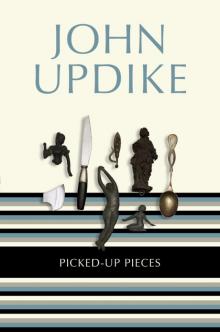 Picked-Up Pieces: Essays
Picked-Up Pieces: Essays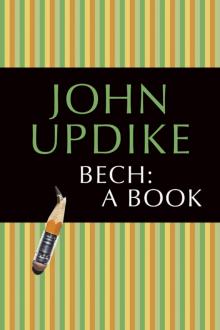 Bech: A Book
Bech: A Book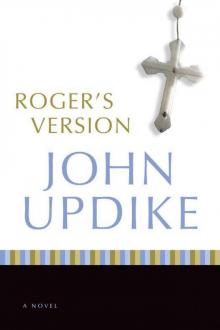 Roger's Version: A Novel
Roger's Version: A Novel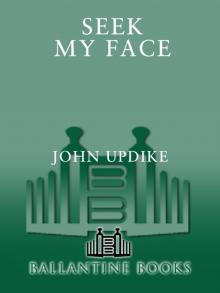 Seek My Face
Seek My Face The Carpentered Hen
The Carpentered Hen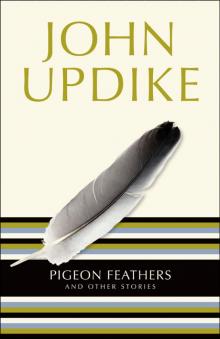 Pigeon Feathers: And Other Stories
Pigeon Feathers: And Other Stories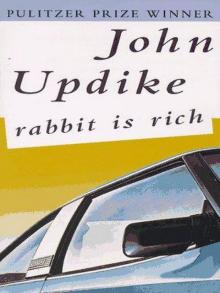 Rabbit Is Rich
Rabbit Is Rich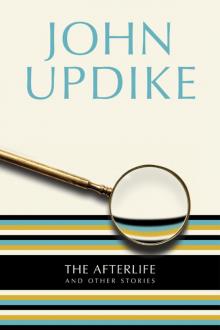 The Afterlife: And Other Stories
The Afterlife: And Other Stories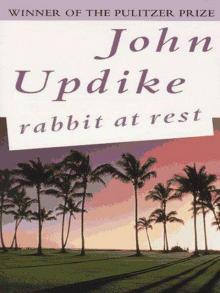 Rabbit at Rest
Rabbit at Rest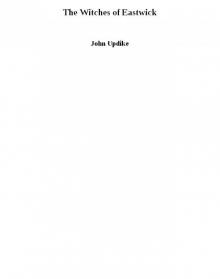 The Witches of Eastwick
The Witches of Eastwick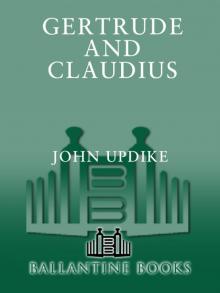 Gertrude and Claudius
Gertrude and Claudius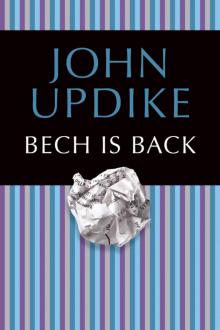 Bech Is Back
Bech Is Back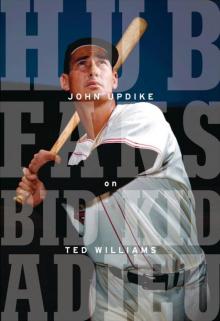 Hub Fans Bid Kid Adieu: John Updike on Ted Williams
Hub Fans Bid Kid Adieu: John Updike on Ted Williams Marry Me: A Romance
Marry Me: A Romance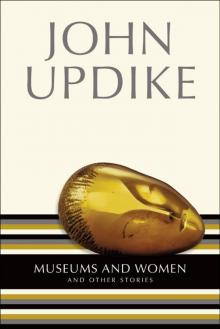 Museums and Women: And Other Stories
Museums and Women: And Other Stories My Father's Tears and Other Stories
My Father's Tears and Other Stories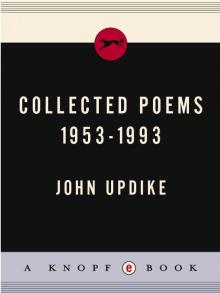 Collected Poems, 1953-1993
Collected Poems, 1953-1993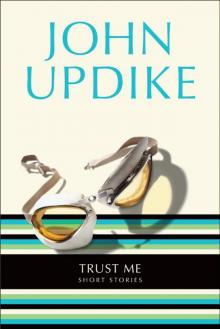 Trust Me: Short Stories
Trust Me: Short Stories Odd Jobs: Essays and Criticism
Odd Jobs: Essays and Criticism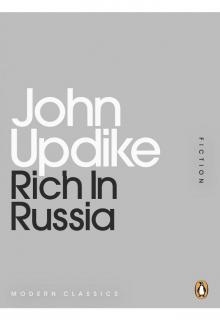 Rich in Russia
Rich in Russia Higher Gossip: Essays and Criticism
Higher Gossip: Essays and Criticism The Widows of Eastwick
The Widows of Eastwick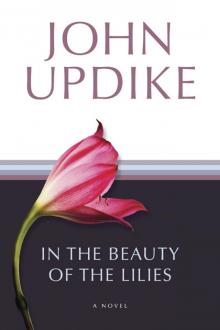 In the Beauty of the Lilies
In the Beauty of the Lilies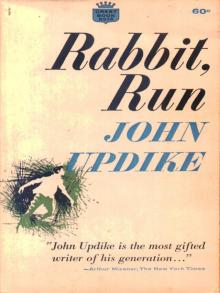 Rabbit, Run
Rabbit, Run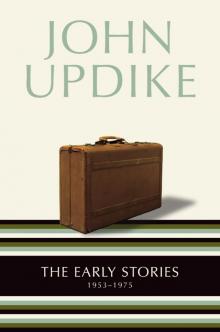 The Early Stories: 1953-1975
The Early Stories: 1953-1975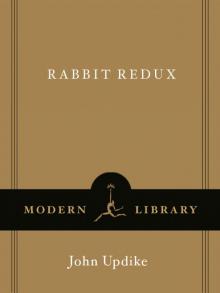 Rabbit Redux
Rabbit Redux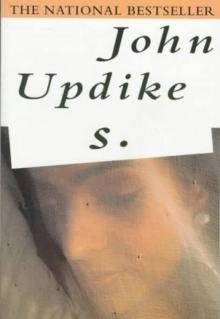 S.
S.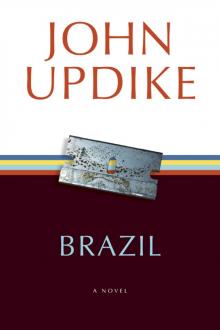 Brazil
Brazil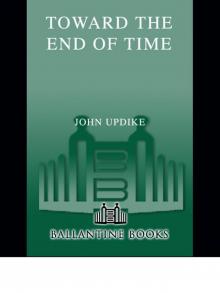 Toward the End of Time
Toward the End of Time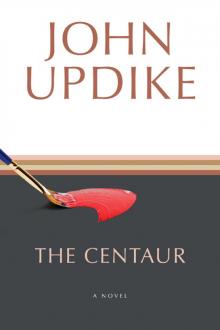 The Centaur: A Novel
The Centaur: A Novel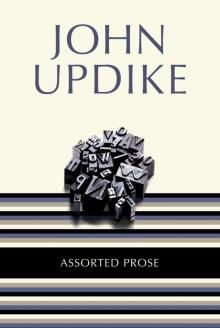 Assorted Prose
Assorted Prose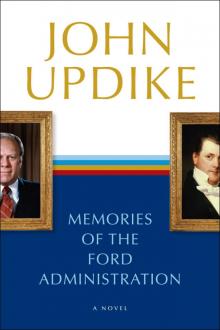 Memories of the Ford Administration
Memories of the Ford Administration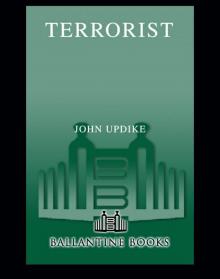 Terrorist
Terrorist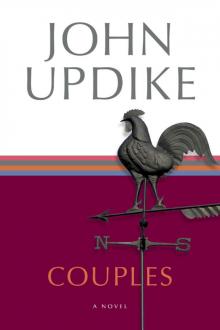 Couples: A Novel
Couples: A Novel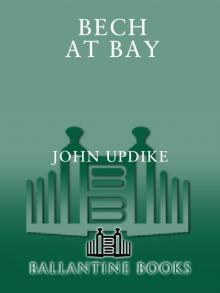 Bech at Bay
Bech at Bay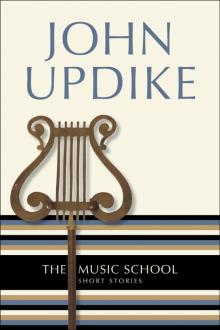 The Music School: Short Stories
The Music School: Short Stories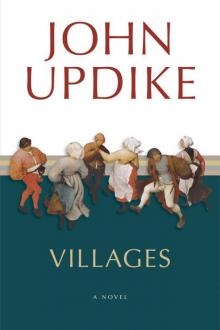 Villages
Villages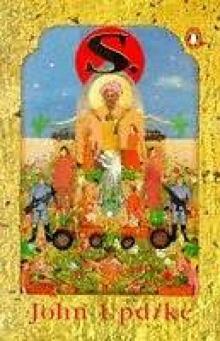 S
S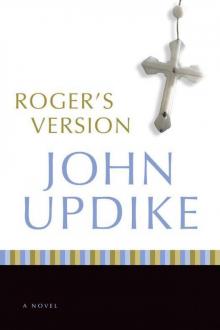 Roger's Version
Roger's Version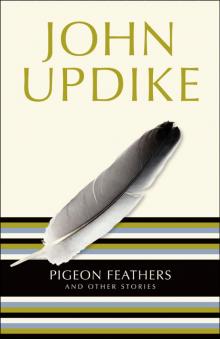 Pigeon Feathers
Pigeon Feathers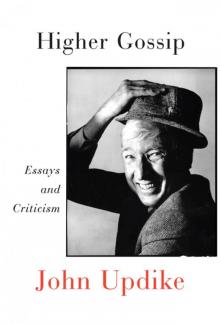 Higher Gossip
Higher Gossip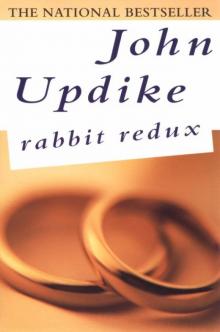 Rabbit Redux r-2
Rabbit Redux r-2 Memories of the Ford Administration: A Novel
Memories of the Ford Administration: A Novel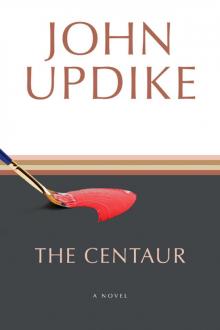 The Centaur
The Centaur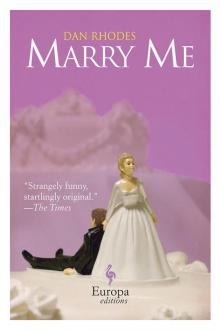 Marry Me
Marry Me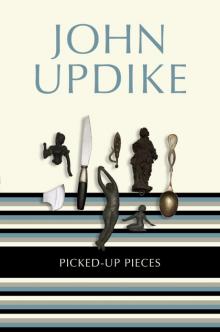 Picked-Up Pieces
Picked-Up Pieces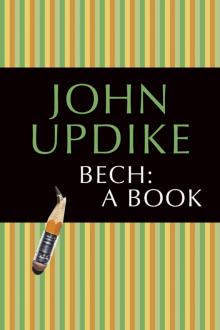 Bech
Bech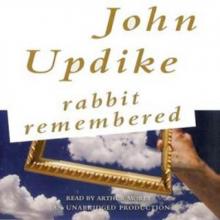 Rabbit Remembered
Rabbit Remembered Trust Me
Trust Me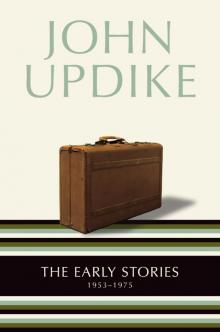 The Early Stories
The Early Stories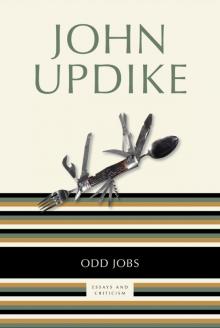 Odd Jobs
Odd Jobs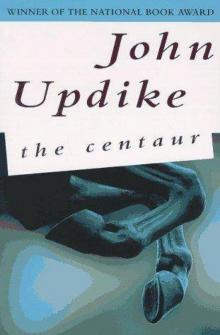 The Centaurus
The Centaurus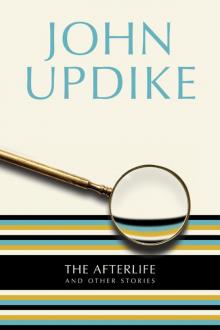 The Afterlife
The Afterlife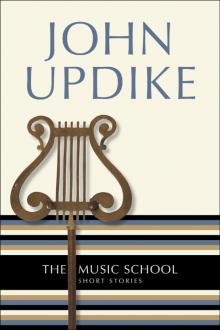 The Music School
The Music School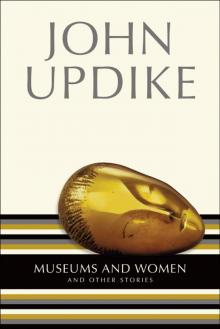 Museums and Women
Museums and Women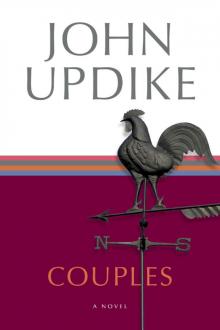 Couples
Couples